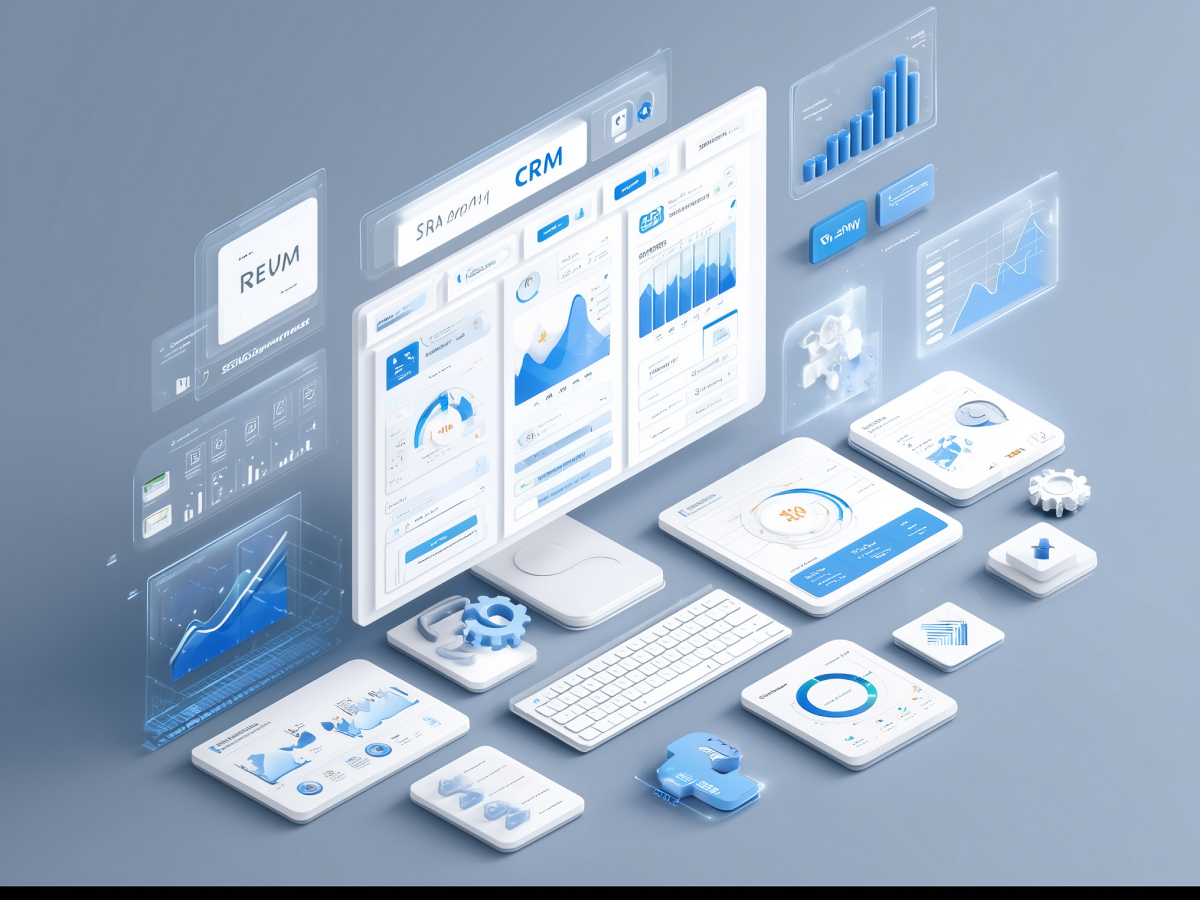Traditional monolithic AI agents struggle with real-time performance
Since we started applying AI to practical workflows, like handling customer service calls or booking restaurant tables, it’s become very clear where the friction is. Systems built with a single, all-in-one AI agent tend to break under pressure. And it’s not hard to see why. You’re asking the same model to conduct deep context analysis, manage user interactions, adapt to unpredictable inputs, and act in real time, with no pause to think.
In the real world, people ask follow-up questions. They throw curveballs. An AI trained to handle everything at once usually lacks the focus to manage that. For example, a restaurant might ask during a call if the customer has any dietary allergies, if the AI didn’t collect that earlier, it might freeze, forget, or guess wrong. That’s where frustration sets in for both the customer and the business.
The other issue is speed. You can’t run high-complexity, slow-executing processes in a fast-twitch environment like a phone call. Customers won’t wait 10 seconds for a response, they’ll hang up. But merging slow and fast AI logic into one model forces it to split processing power, causing delays or poor answers, or both.
Monolithic AI doesn’t scale well for tasks that need speed, accuracy, and reliability all at once. If your AI handles real-world conversations, you’ll need a better model structure. Otherwise, it’s going to fail where it matters most, live, with your customer.
A two-agent architecture enhances performance
A more stable and scalable solution is what we call the two-agent architecture. Think of it as using two brains, one to think, and one to act. The context agent handles all the heavy lifting before anything real-world happens. It asks users clarifying questions, digs through data, performs web searches, and develops a plan. The execution agent runs only when the plan is in place. It makes real-time decisions, handles live dialogue, and adapts in the moment.
It’s a division of focus. The context agent doesn’t have to rush. That means it collects better data and ensures the execution agent has everything it needs. On the other side, the execution agent doesn’t get overwhelmed with strategic planning. It just focuses on doing its job, talking, reacting, and delivering a response instantly.
This change in structure does more than just fix bugs. It creates a system where strategic reasoning and real-time interaction are fully aligned but not cross-wired. That results in a massive boost in reliability, especially in high-pressure situations.
If you’re designing AI for customer-facing tasks, calls, chats, service flows, this is the upgrade path. It scales. It adapts. And it’s far more resilient when things don’t go exactly as planned, which, as any executive knows, is most of the time.
The context agent operates as a strategic planner
The context agent is the core intelligence behind high-quality task automation. It doesn’t just wait for orders, it conducts a proactive exchange with the user, clarifying anything unclear. It asks the right questions at the right time: Who’s attending? What type of food do they want? Are there dietary restrictions or time constraints? That information gets processed, structured, validated, and resolved before anything else happens.
Once enough context is locked in, the agent pulls in real-time data, availability, locations, dietary filters, even backup options. It builds a full operational plan with contingencies and preferences baked in. That handoff to the execution agent is done with everything the system will likely need. So when the real-world interaction begins, no one’s guessing.
If you want automation that doesn’t fall apart during live interactions, this level of preparation is simply necessary. The user experience improves because they’re understood, not just heard. And for executives focused on ROI, this agent’s ability to reduce failure points in complex transactions is measurable, fewer dropped conversations, fewer incorrect bookings, and significantly better user satisfaction.
Done right, this agent becomes a force multiplier, not just a background function. It turns raw input into actionable, contextual intelligence before your system says or does anything.
The execution agent specializes in navigating real-time interactions quickly
When the phone rings or the live conversation starts, everything shifts to the execution agent. It doesn’t ask questions. It acts based on what the context agent already prepared. It knows the preferences, the constraints, the backup options. If something changes mid-call, like a fully booked slot or missing menu item, it doesn’t hesitate. It pivots. It responds instantly with new decisions based on the preloaded plan.
This makes the call feel seamless. There’s no stalling, no awkward delays. The agent can recall the user’s phone number, switch the restaurant, or handle escalation without disruption. That’s because its job is narrow and highly optimized for speed and interaction finesse.
This operational division reduces friction and churn. Customers don’t get frustrated by poor timing or robotic behavior. The execution agent is tuned to move at the pace of human conversation, not system processing. That reliability matters when user expectations are high, and when brand impact is on the line.
For leaders mapping out digital transformation strategies, having this real-time specialization creates durable value. It’s more than UX, it’s operational stability. By separating strategic context from tactical execution, you’re able to move faster and with greater confidence in high-stakes, live environments.
Implementation of the two-agent system
There isn’t a one-size-fits-all structure when deploying a two-agent system. The choice between sequential processing and continuous collaboration depends on what you’re solving for.
When accuracy and control are essential and time sensitivity is limited, sequential processing is the better path. The context agent handles everything upfront: collecting detailed input, scanning available options, ranking results, and setting backup plans. Only when this process is finalized does the execution agent begin the live engagement. That extra planning time increases the likelihood of first-attempt success, which translates to higher quality outcomes.
In contrast, continuous collaboration is suited to longer, more fluid conversations. The context agent stays in the loop throughout the interaction, feeding new analysis to the execution agent in real time. This matters when needs evolve during a call, like customer service or technical support, where relevant information might only surface after the conversation is already underway.
Both modes are useful. The strength lies in being able to deploy either approach based on the complexity and timing demands of the workflow. For executives, this flexibility means the system isn’t rigid. You can fit it into various business functions without compromise, sales, logistics, reservations, or any other human-facing process that benefits from a mix of foresight and responsiveness.
Two-agent architectures improve system optimization, scalability, reliability, and debugging efficiency
When you split AI responsibilities, everything improves, from performance to diagnostics. Each agent can be tuned independently. The context agent can use larger models, more time-intensive reasoning, and deeper validation without slowing down the front end. Meanwhile, the execution agent can be optimized for responsiveness, speed, and fallback logic.
This architecture decouples the logic layer from the interaction layer. That makes the system more scalable. During peak usage, say, reservation-heavy evening hours, you can scale execution agents horizontally to handle more conversations, without needing to expand your context-processing efforts in lockstep.
It also improves fault tolerance. If the context agent fails to complete its task, the execution agent can still pursue partial fallbacks, such as gathering data live or switching workflows. Problems no longer cascade through the system the way they often do in monolithic designs.
From an operational perspective, this increases system resilience and minimizes downtime. Debugging becomes easier as well. If something fails, you know where, context or execution, and why. That clarity means lower maintenance costs, faster issue resolution, and a software layer that doesn’t behave unpredictably when real-world variables shift.
If your goal is to build infrastructure that can scale with increasing user demands and complexity while remaining fast and dependable, the two-agent system is one of the clearest paths forward.
Tracking distinct performance metrics for each agent enables isolated and targeted improvements
To improve something, you need to measure it precisely. In a two-agent system, performance telemetry is cleanly separated. The context agent has its own metrics, processing time, context completeness, strategic planning depth, and success of preliminary data gathering. These let you understand how well the system prepares to execute before a live interaction even begins.
At the same time, the execution agent is judged on an entirely different scale, response latency, completion rates, interruption handling, fallback frequency, and call duration. These indicators highlight how reliable the agent is in real-time engagement.
This separation of metrics is what enables targeted optimization. You can improve the strategic reasoning of the system without affecting its responsiveness, and vice versa. If a call fails, you’ll know whether the plan was wrong to begin with or if the interaction itself broke down. That distinction means faster iterations and better reliability over time.
For enterprises, the payoff is operational clarity. This makes it easier for tech teams and business stakeholders to iterate, fix issues quickly, and invest resources where they actually move the needle. Clean separation of performance inputs leads to predictable, scalable system upgrades, not trial-and-error patches.
The two-agent architectural approach provides a scalable and robust foundation
This architecture is built for scale. Not just in the number of users or calls, but in complexity of use cases, variability of inputs, and rising customer demands. By clearly separating high-level reasoning from live interaction, the system remains stable no matter how much the environment changes.
It handles edge cases better. It performs well when users go off-script. It recovers from failures without compromising the entire interaction stack. That makes it more than efficient, it makes it reliable across long-term product cycles, tight turnaround schedules, and high-volume user traffic.
When complexity increases, as it inevitably does at scale, monolithic models break down. They don’t adapt fast enough. Two-agent systems don’t have that weakness. They absorb scaling pressure through their modularity. And because they rely on defined roles and interaction boundaries, you can evolve each component independently without rebuilding the entire stack.
If you’re deploying AI to solve real operational problems, not demos, not concept tests, but actual business tasks, this architecture gives you a durable foundation. It’s structured for long-term performance, quick adaptation, and minimal failure impact. It puts you in control of both speed and depth, without making trade-offs. That’s the baseline for AI that works in the real world.
The bottom line
If you’re serious about deploying AI that can handle real-world complexity and scale with your business, the architecture matters. Trying to force everything, context analysis, planning, execution, into a single agent doesn’t hold up under real pressure. You’ll spend more time managing system failures than delivering real value.
The shift to a two-agent model isn’t theoretical. It’s battle-tested. It improves response times, reduces system fragility, and gives you control over how your AI systems behave in both expected and unpredictable scenarios. That kind of reliability isn’t optional when you’re dealing with customers, transactions, or any part of your business that can’t afford to drop the ball.
For decision-makers looking at long-term infrastructure, this isn’t just a technical upgrade, it’s a strategic move. Modular systems reduce risk, scale more predictably, and give your teams the ability to optimize what matters most at any point in time. You don’t need more complexity. You need smarter architecture that can actually keep up with your business. This is how you get there.





